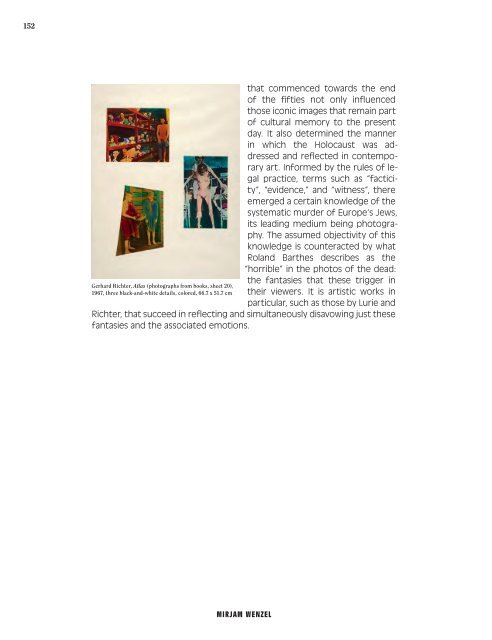The Art of
1WQggTh
1WQggTh
You also want an ePaper? Increase the reach of your titles
YUMPU automatically turns print PDFs into web optimized ePapers that Google loves.
152<br />
Gerhard Richter, Atlas (photographs from books, sheet 20),<br />
1967, three black-and-white details, colored, 66.7 x 51.7 cm<br />
that commenced towards the end<br />
<strong>of</strong> the fifties not only influenced<br />
those iconic images that remain part<br />
<strong>of</strong> cultural memory to the present<br />
day. It also determined the manner<br />
in which the Holocaust was addressed<br />
and reflected in contemporary<br />
art. Informed by the rules <strong>of</strong> legal<br />
practice, terms such as “facticity”,<br />
“evidence,” and “witness”, there<br />
emerged a certain knowledge <strong>of</strong> the<br />
systematic murder <strong>of</strong> Europe‘s Jews,<br />
its leading medium being photography.<br />
<strong>The</strong> assumed objectivity <strong>of</strong> this<br />
knowledge is counteracted by what<br />
Roland Barthes describes as the<br />
“horrible” in the photos <strong>of</strong> the dead:<br />
the fantasies that these trigger in<br />
their viewers. It is artistic works in<br />
particular, such as those by Lurie and<br />
Richter, that succeed in reflecting and simultaneously disavowing just these<br />
fantasies and the associated emotions.<br />
MIRJAM WENZEL


